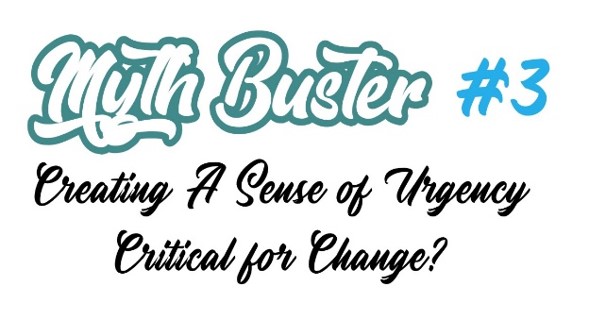THE CLAIM
From Lewin’s ‘emotional stir up’ to Conner’s ‘orchestrating pain’ there is an axiom in OCM that organisations are ‘canyons of complacency’ (Kotter 2012).
THE EVIDENCE
But what exactly does a ‘sense of urgency’ mean? Kotter doesn’t seem sure. He states organisations must ‘create a crisis’ (Kotter 2012) but also takes a softer approach stating urgency as ‘business-as-usual not being acceptable’ (Kotter 1995) – two completely different things. If we don’t know how Kotter tested for this claim, we don’t know which end of the urgency spectrum we should aim for. High quality evidence tells us that a perceived threat is only effective if people feel they can do something about it and so creating psychological safety is probably better starting point for initiating change than threats. Research also suggests that scare tactics rarely work and difficult goals lead to unethical behaviour. Kotter’s claim is based on his belief that humans don’t like change (Kotter 1995) – a myth perpetuated in ADKAR’s 2010 curricula where they state ‘The natural reaction to change is resistance’.
THE VERDICT
As Schein says, if we want people to respond positively to ‘disconfirming information’ we should create a psychologically safe environment and a belief that change is possible.
THE REFERENCES
https://hbr.org/1995/05/leading-change-why-transformation-efforts-fail-2
https://www.strategies-for-managing-change.com/daryl-conner.html


